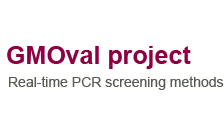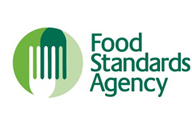Project structure
The project is composed of four connected work packages (WPs):
- WP1: Set-up of the validation process and communication
- WP2: Method completion
- WP3: Verification, transferability and validation studies
- WP4: Statistical data analysis

T1:
- Preparation of documentation for WP2 and WP3. Selection of laboratories to participate to the transferability studies and the collaborative trials.
Method in-house validation: the performance parameters to be tested, minimum requirements to reach these parameters as well as result forms for reporting the performance of the methods. To WP2and WP3 partners.
SOP template that considers the ISO requirements. To WP2 partners.
Instructions regarding the preparation and the shipment of materials. To WP2 and WP3 partners
- Selection of laboratories to participate to the transferability studies and the collaborative trials.
Preparation of a questionnaire
Definition of acceptance criteria
List of potential participating laboratories
T2:
- Complete in-house validation
- Gather results and send to WP1
T3:
- Produce/acquire material necessary for T2 and for WP3. Send non-extracted material and information about this material to WP3 partner.
- Produce SOPs. Send to WP3partner.
T4:
- Reception and registration of SOPs, material and related information sent by WP2 partners
- Acquisition of the reagents for the following WP3 activities
- DNA sample preparation
T5:
- Characterization of the DNA samples
- Experimental verification of some of method performances and transferability studies.
- Data sent to WP1 partners.
T6:
- Organisation of the collaborative trials (documentation, reagents and DNA samples shipment)
- Gathering of the collaborative data
- Data sent to FERA, WP1 partners and relevant method developer
T7:
- Statistical analysis of collaborative trial data
- Data sent to WP1 partners and relevant method developer
T8:
- Assessment of data for each method in-house validation. Decision on continuation and data sent to WP3 partner and relevant method developer
- Assessment of data for each method experimental verification and transferability study. Decision on continuation and data sent to WP3 partner and relevant method developer
- Assessment of data for each method collaborative trial. Decision on the suitability of the method
T9:
- Communication
Project GMOVal
The central aim of the project is to make available to the GMO laboratories community new validated real-time PCR screening methods for an improved GMO detection via the implementation of the matrix approach.



